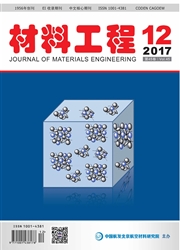

 中文摘要:
中文摘要:
采用准静态压入(Quasi-Static Indentation,QSI)实验方法对"离位"增韧复合材料层合板和未增韧层合板进行了实验研究。分析了QSI实验中层合板的损伤破坏过程,并对两类层合板的实验结果进行了对比分析。结果表明:"离位"增韧技术能够有效提升复合材料层合板的低速冲击损伤阻抗性能;准静态压入实验中,接触力-压头位移曲线上第1个接触力突降点并不对应于分层损伤的起始点;"离位"增韧层合板的增韧层能够有效延缓层间分层的出现及扩展,但当载荷接近最大接触力时,"离位"增韧层合板内部的分层损伤面积会比未增韧层合板分层损伤面积更大;当层合板发生穿透破坏时,"离位"增韧层合板试件的背部穿透损伤区域较集中,而未增韧层合板背面出现了狭长的纤维劈裂区。
 英文摘要:
英文摘要:
The "ex-situ" toughened and the non-toughened composite laminates were tested by using the quasi-static indentation(QSI) test method.The damage propagation and failure process of these two kinds of composite laminates were compared.The results show that the low-velocity impact damage resistance of composite laminates significantly increases due to the "ex-situ" toughening technique.According to the test results,the first load drop point on the contact force vs indenter displacement curve doesn't correspond to the initiation of delamination.The existence of toughening layers could postpone the initiation of delaminations and also slow down the propagation of delaminations.However,at the maximum contact force,the delamination area in the "ex-situ" toughened laminates is larger than that in the non-toughened laminates.From the view of the back side of the penetrated specimens,the damage region on "ex-situ" toughened laminate is much more localized than that on the non-toughened laminate.For the latter,long and narrow fiber fractures were observed.
 同期刊论文项目
同期刊论文项目
 同项目期刊论文
同项目期刊论文
 期刊信息
期刊信息
